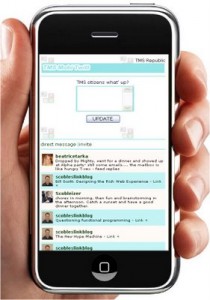What started with a piece by David Berkowitz on MediaPost (registration required), on Ten Ways To Decide If Your Business Should Tweet, has turned into an interesting conversation about using Twitter to support a brand, and especially about measuring those efforts. This conversation has been primarily through this lengthy post from earlier today by Marshall Sponder.
Marshall makes some excellent points (he’s not @WebMetricsGuru for nothing!), including this one: “Social Media isn’t really designed, at this time, to analyze Acquisition or Retention – but Web Analytics, is — and I maintain this is one of the strongest arguments to merge the two, in a formal way, rather than in an informal way.”
Datamining and CRM
How do you begin merging these data in a “formal” way? Tools are emerging to allow for the mining of conversations, and linking them where possible to a CRM database. Here’s Marshall’s take on this process:
David Berkowitz talks about Target Audiences, but you’d first have to figure out what your Target Audience is for your Brand or for a particular product or promotion of your Brand – then do CRM datamining using house database lists, or the Social Media CRM outreach to collect names and classify them according to Target Audience Segmentation — best done with data analytics.  Let’s say, that for the purposes of this post, my article on Entrepreneur.com on Learn to Measure Your Web Presence using Unbound Technology or Rapleaf, is the way to go.
If you’re a mom-and-pop shop, you’d do nothing as elaborate, more just Twitter research, much as I’ve shown above, but if you’re Zappos, or Dell, well … that’s another story — the story I tell in Learn to Measure Your Web Presence and others, like it.
Of course, a big brand can make a lot of money whereas the mom and pop shop, probably won’t — so a big brand can afford to spend a lot of money on data mining — and it’s well worth doing because of the potential money and value that can come from it.
Scarcity of Resources
The biggest constraint in doing this sort of work isn’t technology. It’s time. Even properly guided, the process takes many people-hours, and that is a resource in short supply for most businesses today. I see a major challenge in the linkage between prospects / customers and Twitter profiles. (Ack!, I can hear you yell. Yet another datapoint to capture in our CRM databases: The client’s Twitter handle!)
But it is becoming clear that this is an area where a business should focus some of its energies — assuming the business passes David Berkowitz’s Ten Ways test.
Years ago, Don E. Schultz co-wrote Measuring Brand Communication ROI. In this marketing chestnut, he and his co-authors built a surprisingly relevant model for tracking spending and estimated returns for each brand communication (How old is this book? The included Excel file was loaded on a 5.25″ magnetic diskette). A huge category — and ROI black hole — was customer service.
Twitter is a communication channel more than a marketing tactic, and this channel has more to do with customer satisfaction and brand education than driving sales. It’s another touchpoint and nothing more.
But like email and other important touchpoints, it should be measured. Conversations like the one taking place today will help determine how this measurement takes place and to what end.
![]()
 Then, yesterday, it was announced that Google was going forward with a similar ad unit. It would contain the advertiser’s five most recent “tweets” from Twitter.
Then, yesterday, it was announced that Google was going forward with a similar ad unit. It would contain the advertiser’s five most recent “tweets” from Twitter. 